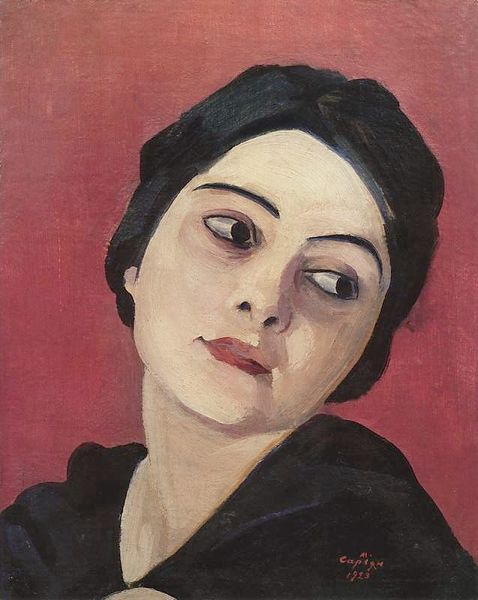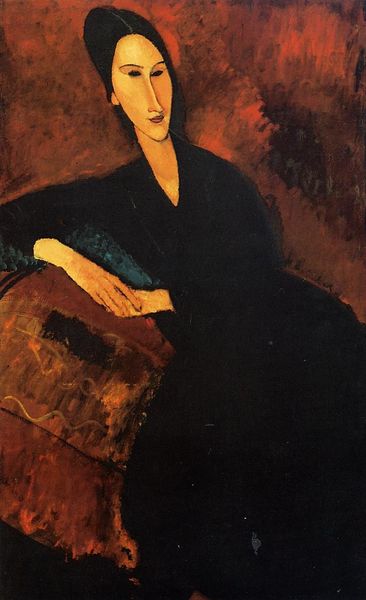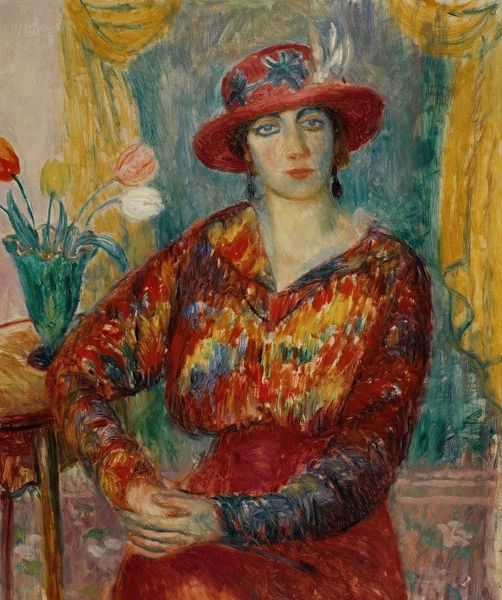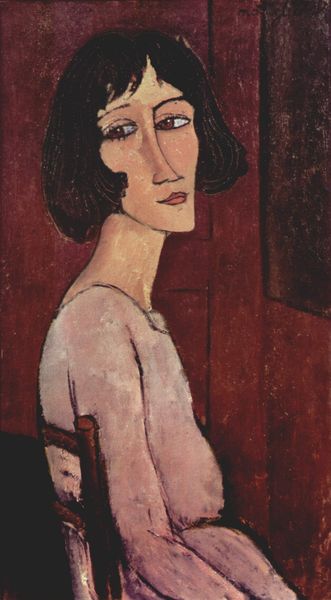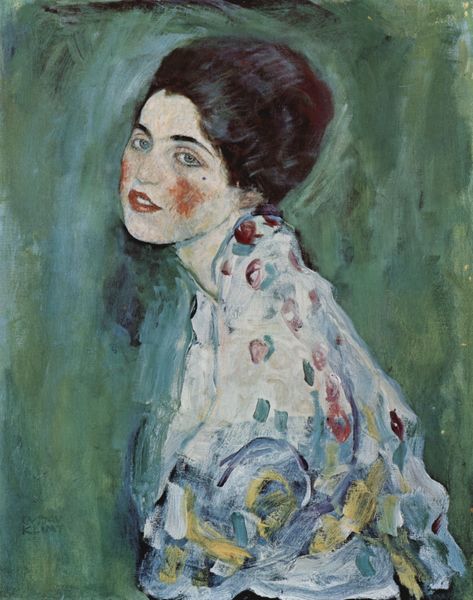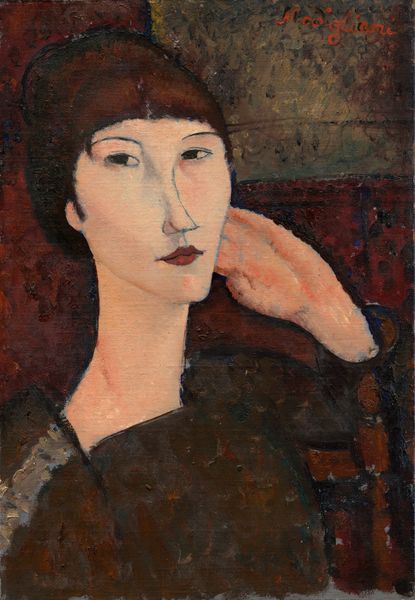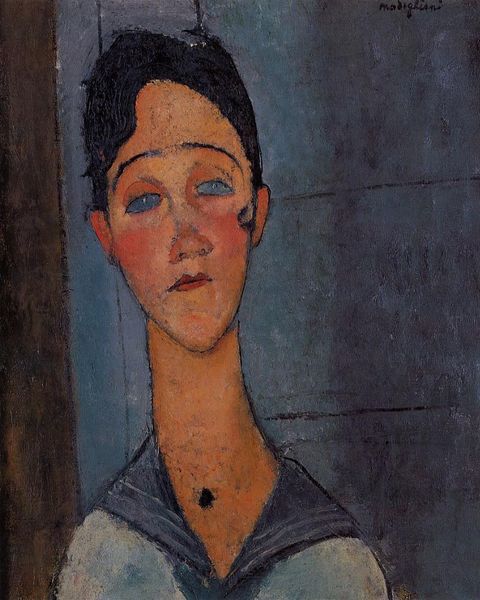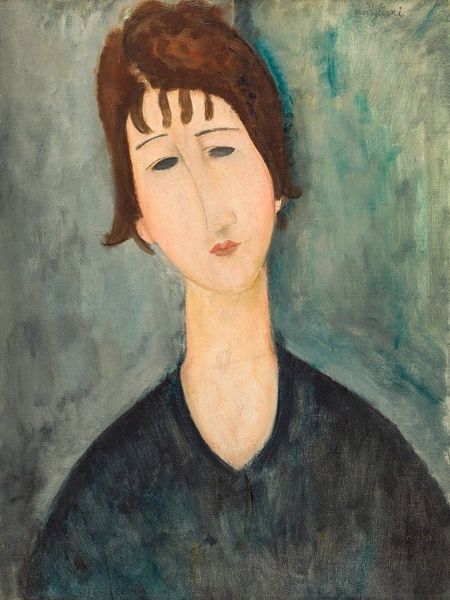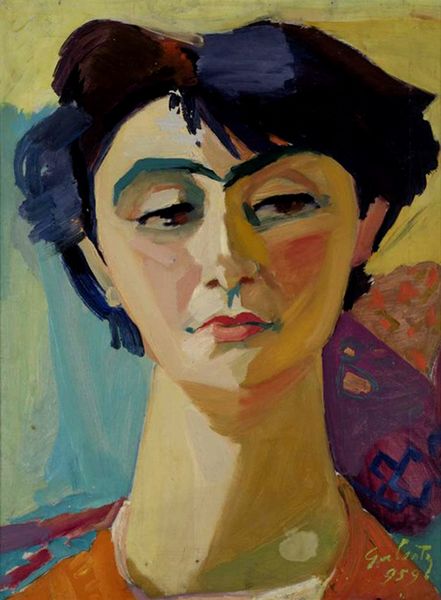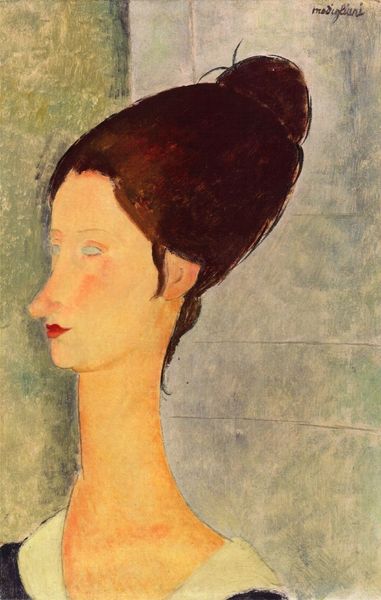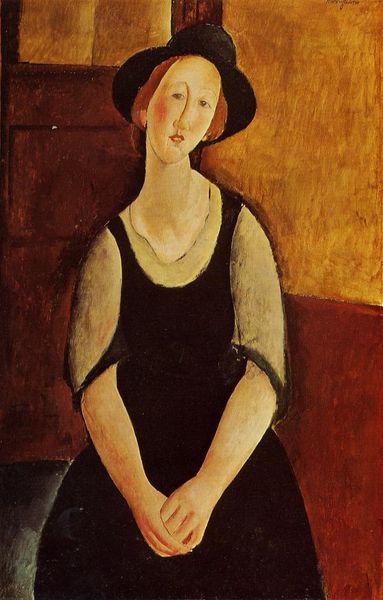
Dimensions: 66 x 70 cm
Copyright: Public domain US
Editor: We're looking at "Portrait of Nina Komurdzhyan" by Martiros Sarian, created in 1917 using oil paint. It's striking how the flat planes of colour create such a strong sense of depth, despite the simplified forms. What are your thoughts on how Sarian manipulates pictorial space here? Curator: Observe how the artist's flattening of space, characteristic of early Modernism, serves not to diminish depth but to intensify the chromatic interplay. Note the high-key palette, dominated by warm reds and oranges, juxtaposed with the cooler blues and purples. It creates a dynamic tension, does it not? Editor: It absolutely does. It's interesting how the floral patterns in the background seem to both flatten and activate the space. What purpose might that serve in relation to the figure? Curator: Precisely. The background operates less as a setting and more as a field of interacting forms. The floral motifs, while decorative, echo the subject's own contained energy. Notice how her upward gaze, coupled with the diagonal thrust of her neck, establishes a vertical vector countered by the horizontal bands of colour. Editor: I see what you mean. The upward direction pulls the viewer's eye around the whole composition. I hadn't really considered that. Curator: And the artist’s brushwork, evident in the textured surface, reinforces the painting's materiality. The objecthood of the painting itself becomes as important as the depicted subject. The figure and the background are mutually constitutive elements within a structured visual field. Editor: That's a perspective I hadn’t fully appreciated. Looking at the formal elements clarifies how interconnected the various aspects of the portrait really are. Curator: Indeed. Attending to the formal structure allows a richer understanding of how the artwork generates meaning through its own internal logic.
Comments
No comments
Be the first to comment and join the conversation on the ultimate creative platform.
